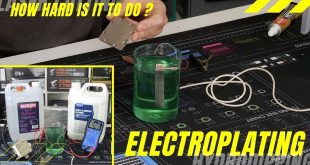You gotta love IBM. While the world plus dog runs around trying to sell a better tablet or phone or hamburger, the blue-suits at International Business Machines are happy focused on one thing: Creating tomorrow. Now Dr Parkin, one of IBM's Fellows, has spoken with Science Magazine and revealed an intriguing breakthrough. KitGuru squints really hard to see what might happen.
Speaking with the General Manager of an Intel plant a few years ago, we asked him what he thought was most impressive about his FAB.
“We are using very old technology to create ever more amazing products”, he told us. “If you try to imagine drawing pencil thin lines on a piece of paper – but you do it with crayons”.
Nice image.
But still there is the relentless march toward putting more and more technology, at lower and lower power levels, into smaller and smaller spaces.
Every now and then, you think the market is going to hit a wall and – one serious breakthrough later – the next generation of chips is now possible, panic averted and we all carry on.
For most processor producers, there has been trepidation once you drop below 10nm. If the passage way and passenger are almost exactly the same size – how can you squeeze anything along a track?
Dr Parkin expained, “We're writing a new chapter in the future of computing with innovations – including looking beyond traditional electrically charge-based devices – to prevent the industry from hitting a technology brick wall”.
Working at the 2.7nm level with vanadium dioxide (VO2), Dr Parkin's team has managed to take some of this insulated metal oxide material, applied a positively charged ionic liquid and – through this process – managed to get the material to change to a conducting material. Then they found that applying a negatively charged liquid would reverse the change, back to its original state.
In a nutshell, if you could create an intelligent ‘real world' situation where this kind of state change was possible – and the state change was fixed until the reversing process was applied – then you have the basics for a chip that ‘remembers' even when switched off.
If you're a budding nano-tech scientist, then you can go and get the full, in-depth article over here.

.
KitGuru says: This may of may not be the ‘game changer' in one to two decades time, but this is exactly the kind of work that ‘tomorrow' needs if we're to carry on living in a world of wonder.
Comment below, in the KitGuru forums or come and join more than 50,000 fellow KitGuru Likers over on Facebook.
 KitGuru KitGuru.net – Tech News | Hardware News | Hardware Reviews | IOS | Mobile | Gaming | Graphics Cards
KitGuru KitGuru.net – Tech News | Hardware News | Hardware Reviews | IOS | Mobile | Gaming | Graphics Cards


